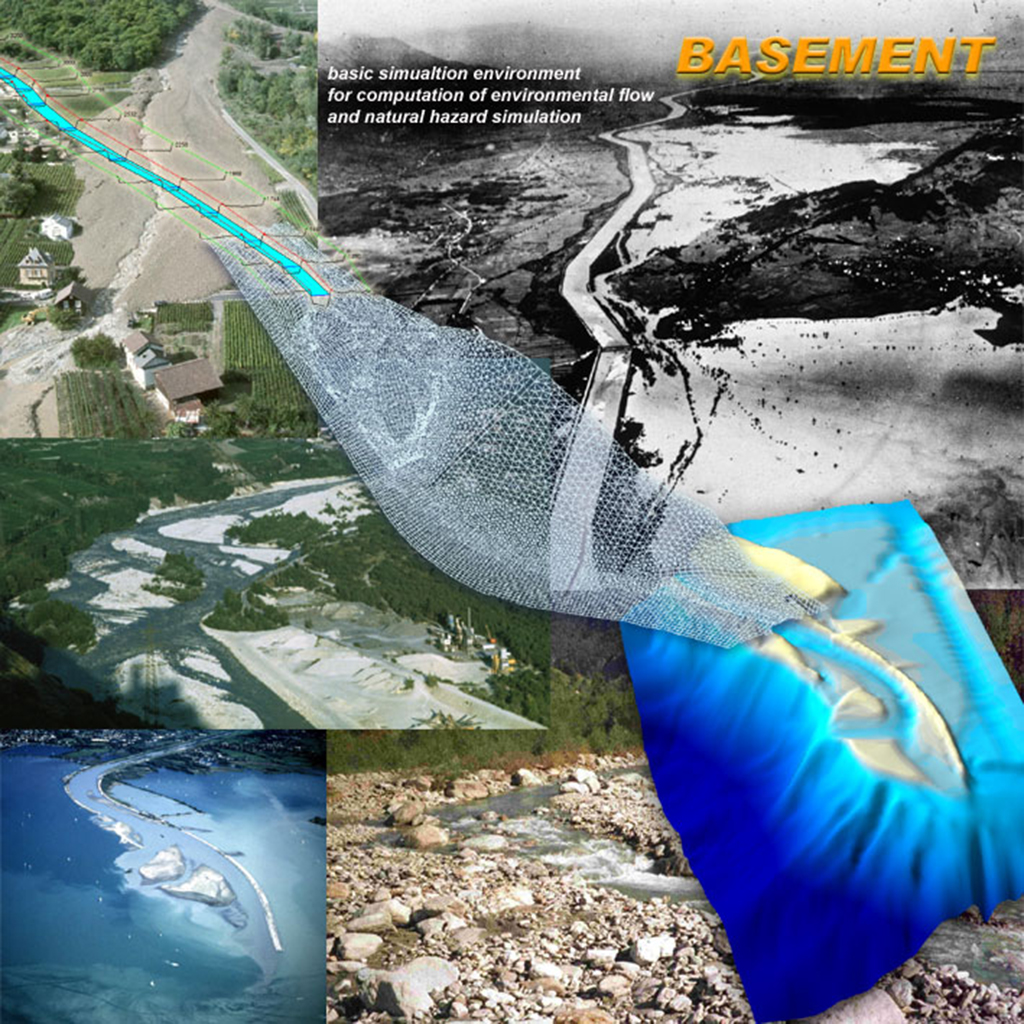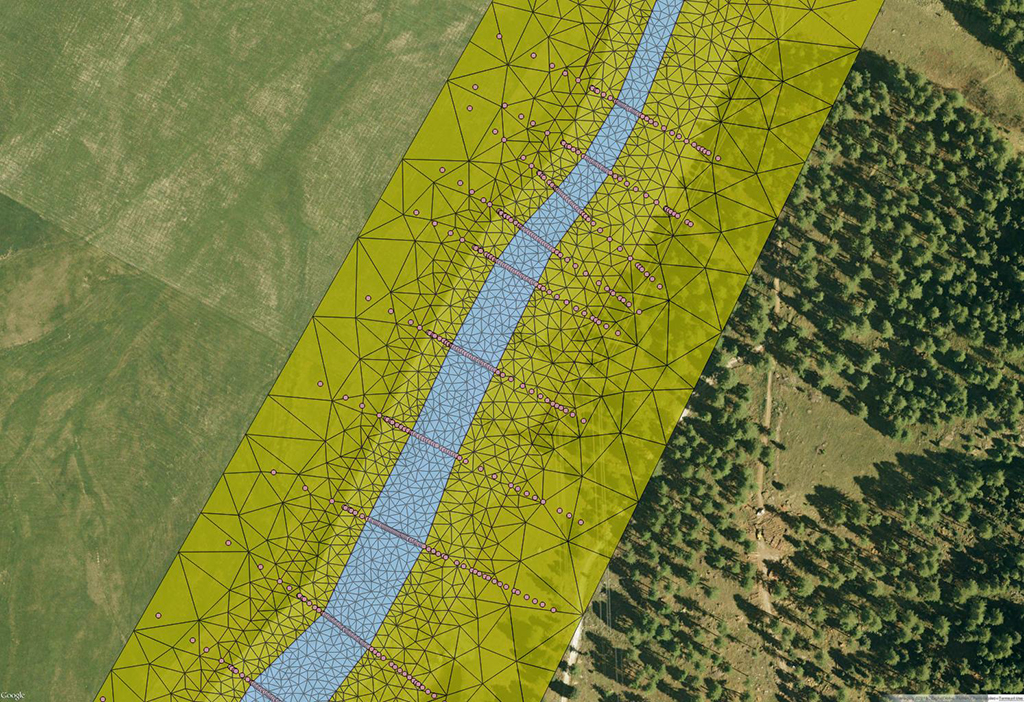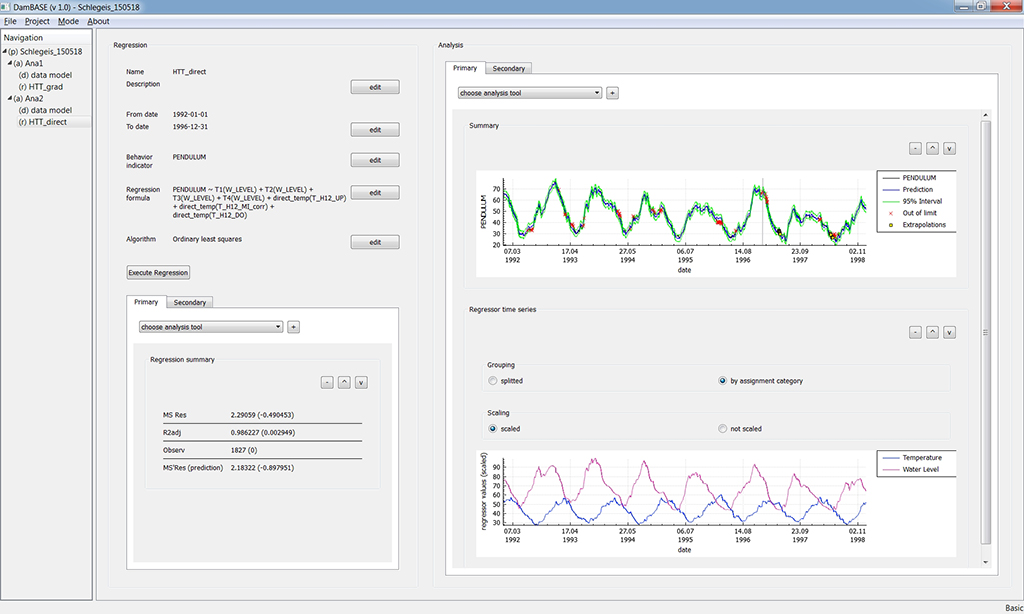Model development

The aim of the project BASEMENT (basic-simulation-environment) is the development of a flexible and functional environment for numerical simulation of alpine rivers and sediment transport involved. The numerical models for the computation of one- and two-dimensional surface flow with moving boundaries and appropriate models for bed load as well as suspended load are forming the core of the software system. A 3-D subsurface flow model is also available. The main focus of conception and development is the stability of the numerical models, the flexibility of the computational grid and the combination and efficiency of the method of calculation (problem dependent equations, coupling of models, parallelization).
The development process is based on the concepts of object orientation, to assure transparency, documentation and flexibility of the software system as far as possible. Future developments, applications related to practice and scientific projects shall build upon the environment of BASEMENT to ensure sustainability.
Subscribe to the user forum to stay up to date.

BASEmesh is a tool for the creation of computational meshes for the numerical software BASEMENT.
It is published as python plugin for QGIS, a free and open source geographic information system used worldwide. QGIS is published under GNU GPL and available under external page www.qgis.org
Subscribe to the user forum to stay up to date.

Concrete dam related long-term processes, such as valley deformation, concrete ageing, alkali aggregate reaction and changes in seepage flow can lead to damage or even failure of the structure. The consequences of a failure are serious. Thus, dam monitoring is essential to recognise abnormal behaviour at early stage. The safety assessment can be done by a comparison between observed and predicted behaviour indicators (e.g. radial pendulum displacement at crest level). The predicted value can be calculated using a model based on input variables such as environmental conditions (e.g. water level, temperatures). Basically, there are two modelling approaches; the deterministic method links the behaviour of the structure and input variables on the basis of physical laws, and the statistical method links it by regression analysis. For statistical models, multiple linear regression models with a least square approach are commonly used for approximation. However, the statistical approach is not straightforward, since it comprises the definition of suitable regressors from the set of input variables. The software DamBASE (Dam Behaviour Analysis Software Environment) facilitates this procedure and provides a framework for statistical analysis of dam behaviour. Multiple linear regression models can be set up, validated and compared. Different analysis tools support the model evaluation, by detection of statistically significant influence variables, analysis of residuals and detection of autocorrelation and multicollinearity, for example. Procedures for statistical analysis are based on the R environment that is integrated into the software. This concept facilitates the extension of the software and the definition of new regressors by R scripts. The software is open source and freely available.
More infos and download of the software are available on the project homepage.